In this work, we manipulate the phase shift of a Josephson junction using a parallel double quantum dot (QD). By employing a superconducting quantum interference device, we determine how orbital hybridization and detuning affect the current-phase relation in the Coulomb blockade regime. For weak hybridization between the QDs, we find π junction characteristics if at least one QD has an unpaired electron. Notably the critical current is higher when both QDs have an odd electron occupation. By increasing the inter-QD hybridization the critical current is reduced, until eventually a π-0 transition occurs. [Full article]
20 Nov 2023
Josephson junction π-0 transition induced by orbital hybridization in a double quantum dot
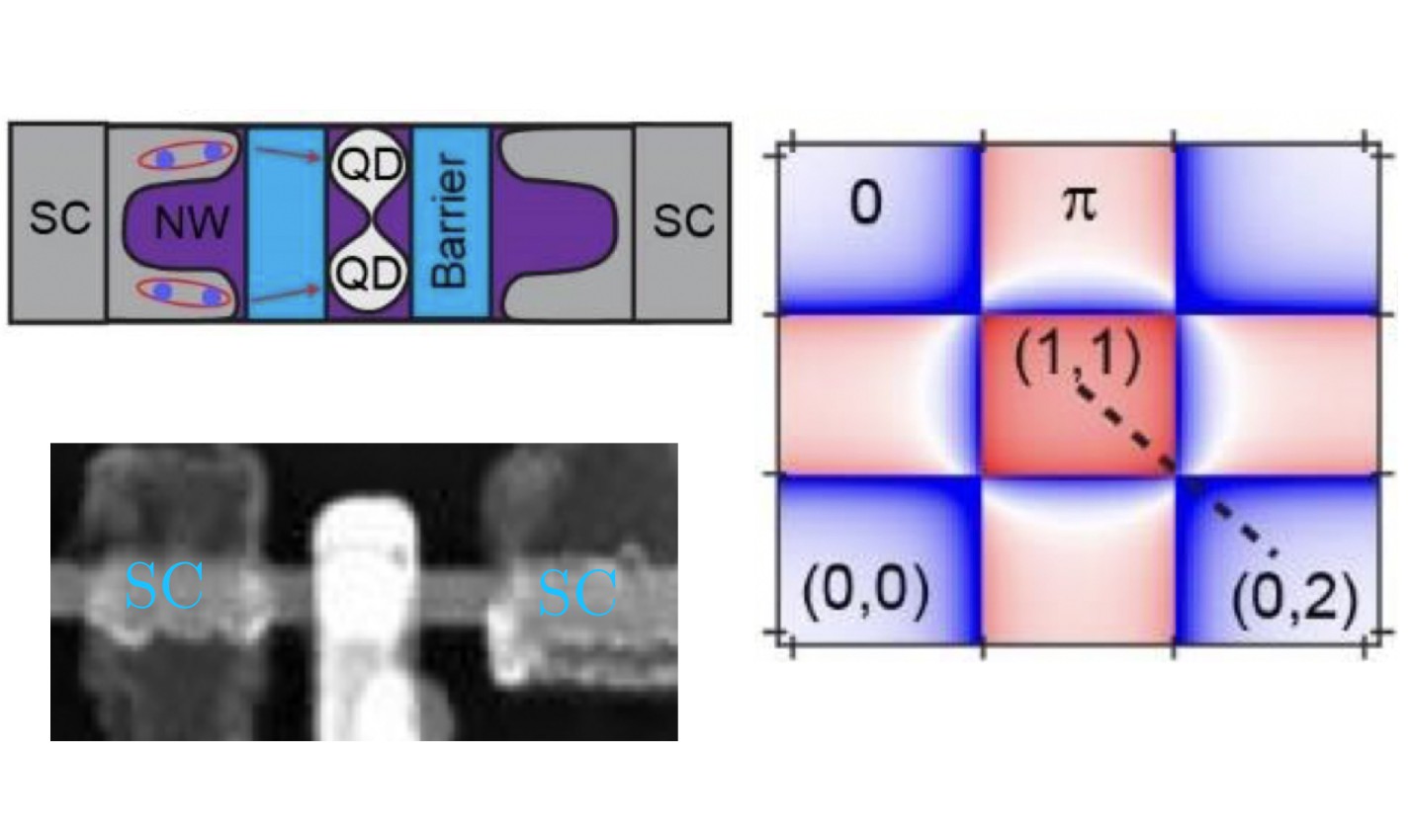
16 Nov 2023
Parity-conserving Cooper-pair transport and ideal superconducting diode in planar Germanium
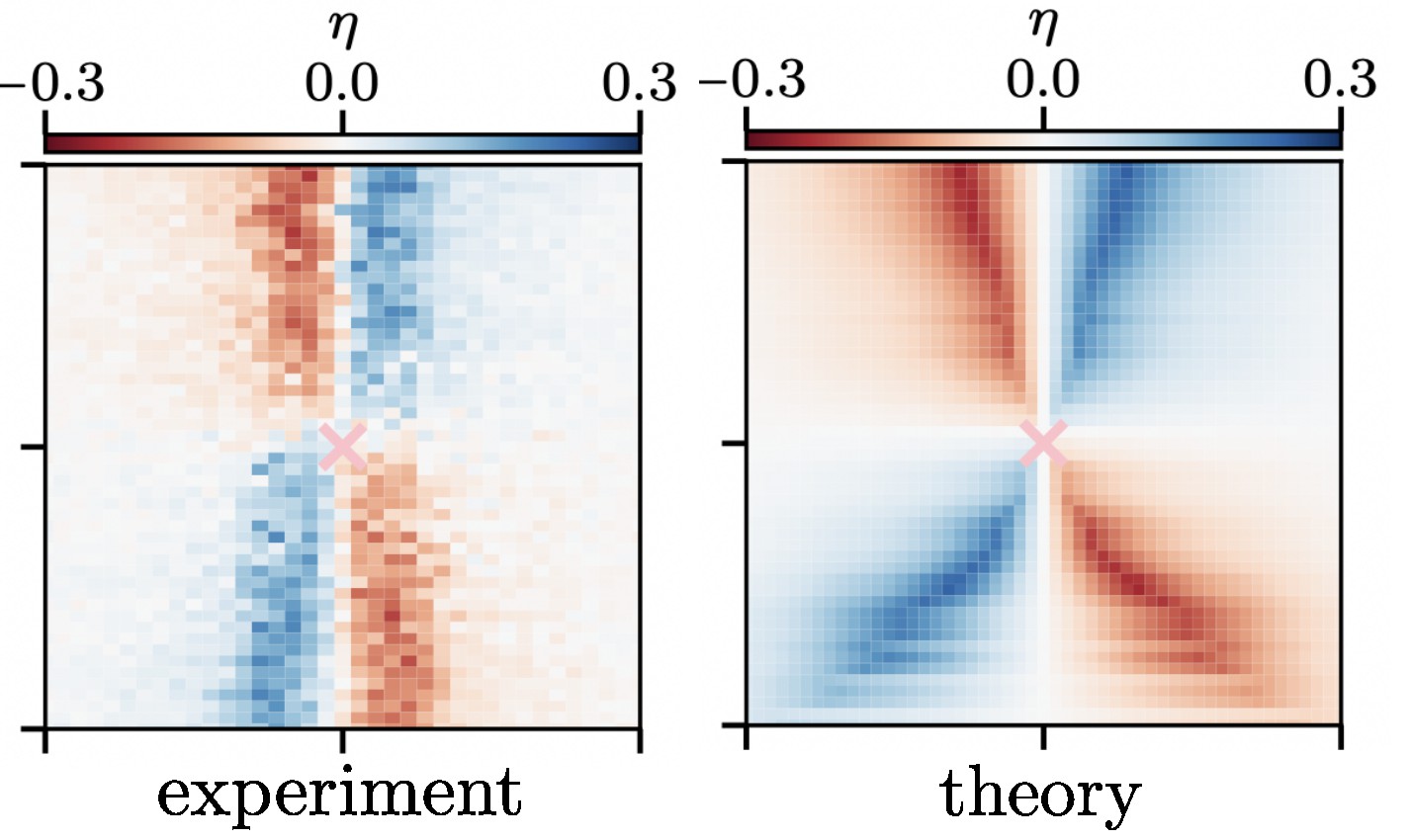
we engineer the induced superconductivity in two-dimensional germanium hole gas by varying the distance between the quantum well and the alu- minum. We demonstrate a hard superconducting gap and realize an electrically and flux tunable su- perconducting diode using a superconducting quan- tum interference device (SQUID). This allows to tune the current phase relation (CPR), to a regime where single Cooper pair tunneling is suppressed, creating a sin (2φ) CPR. Shapiro experiments com- plement this interpretation and the microwave drive allows to create a diode with ≈ 100% efficiency. [Full article]
27 Nov 2023
Probing Majorana localization in minimal Kitaev chains through a quantum dot
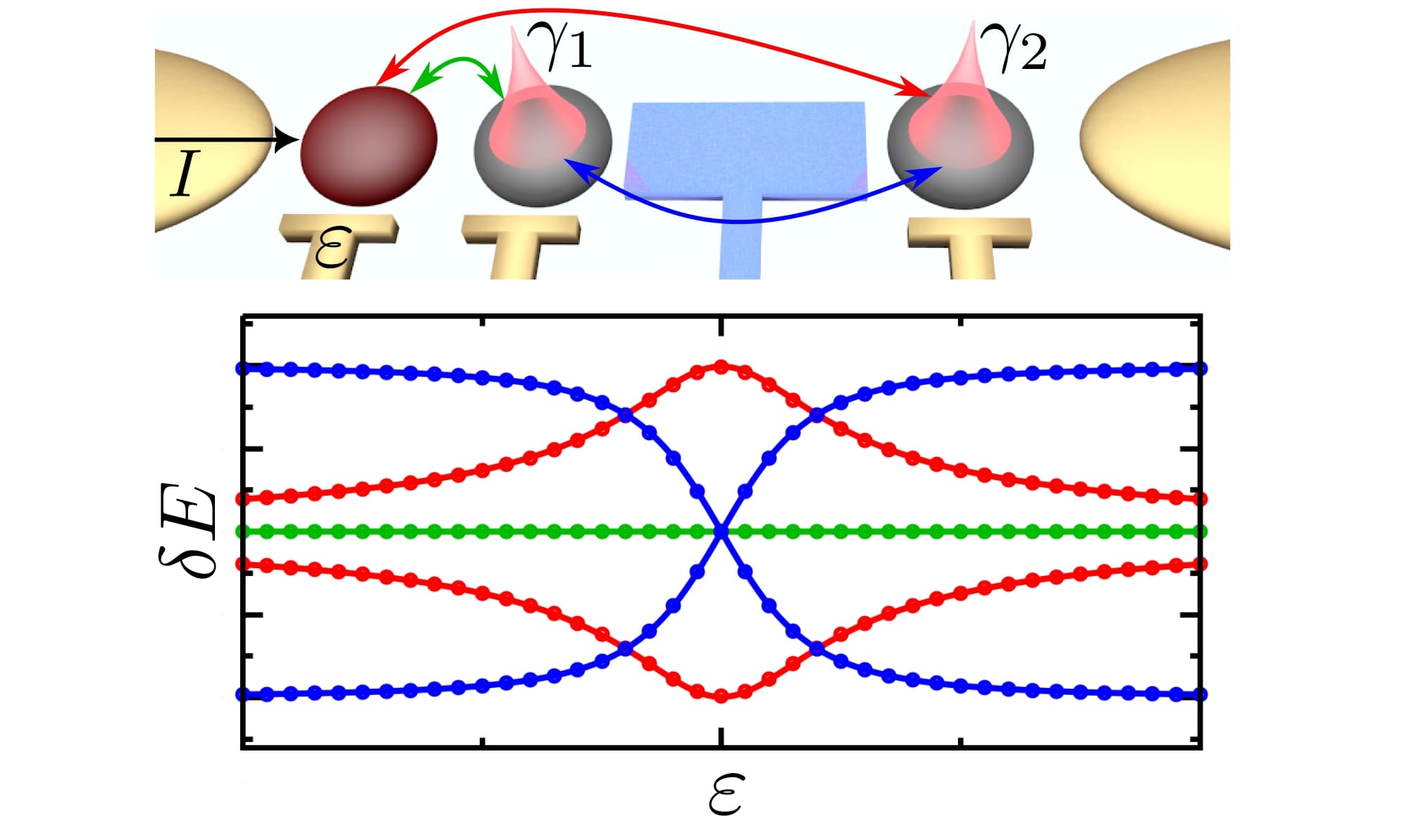
Artificial Kitaev chains, formed by quantum dots coupled via superconductors, have emerged as a promising platform for realizing Majorana bound states. Even a minimal Kitaev chain (a quantum dot–superconductor–quantum dot setup) can host Majorana states at discrete sweet spots. However, unambiguously identifying Majorana sweet spots in such a system is still challenging. In this work, we propose an additional dot coupled to one side of the chain as a tool to identify good sweet spots in minimal Kitaev chains. [Full article]
27 Sep 2023
DC Josephson effect between two Yu-Shiba-Rusinov bound states
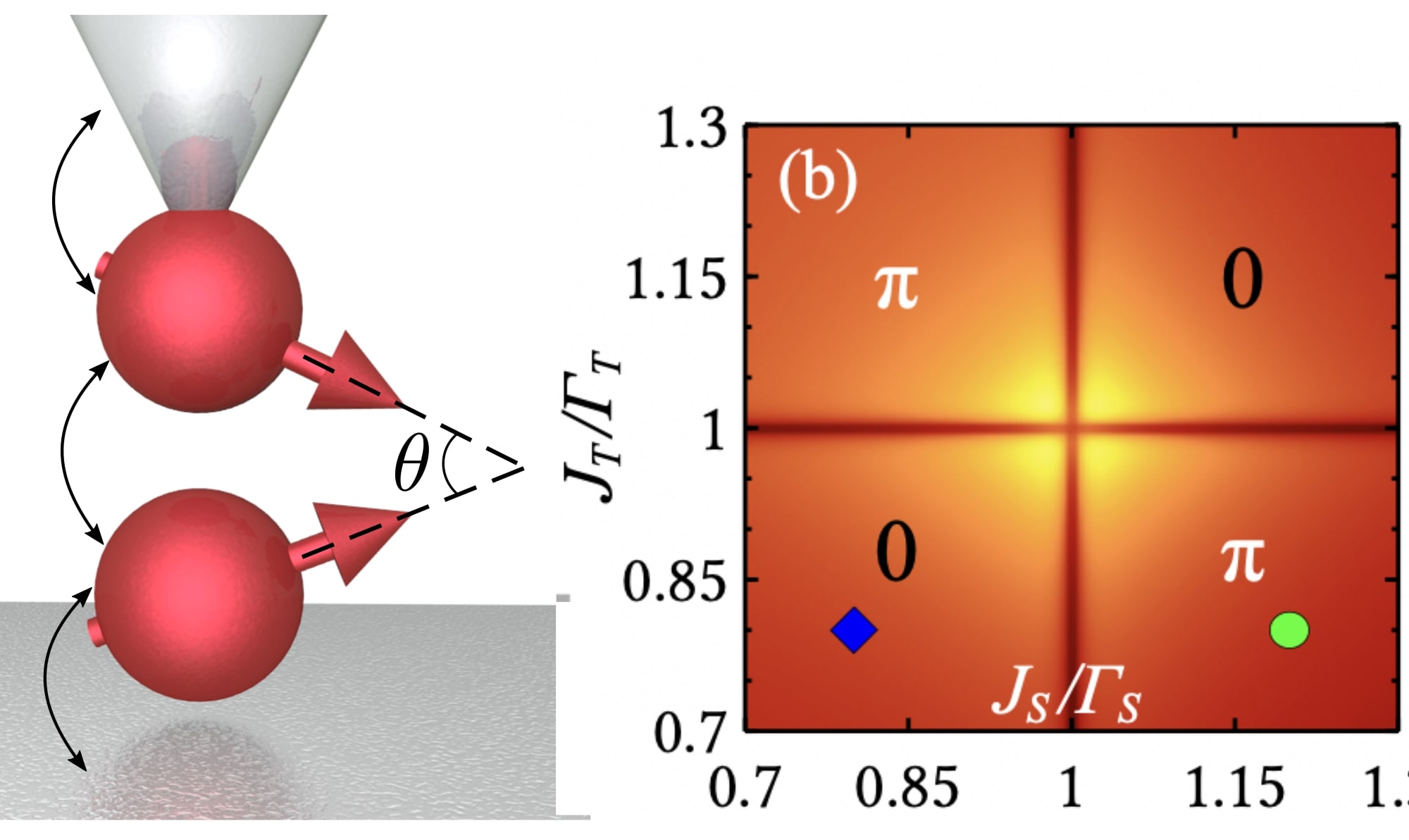
We present here a theoretical study of the DC Josephson effect in a system comprising two magnetic impurities coupled to their respective superconducting electrodes and which exhibit Yu-Shiba-Rusinov (YSR) states. We make use of a mean-field Anderson model with broken spin symmetry to compute the supercurrent in this system for an arbitrary range of parameters (coupling between the impurities, orientation of the impurity spins, etc.). [Full article]
13 Jun 2023
Nonsinusoidal current-phase relations in semiconductor–superconductor– ferromagnetic insulator devices
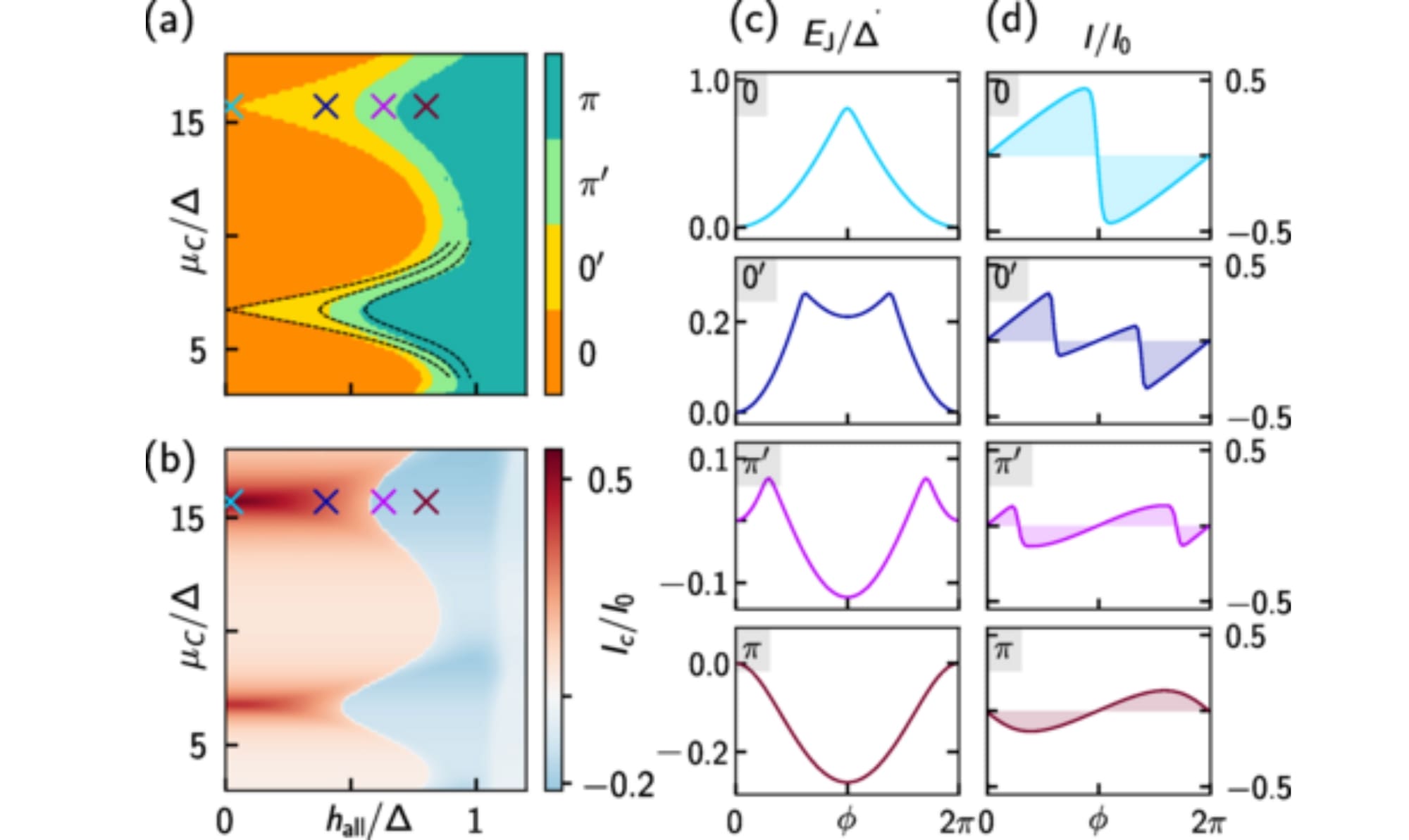
Coherent tunneling processes of multiple Cooper pairs across a Josephson junction give rise to high harmonics in the current phase relation. In this work, we propose and study Josephson junctions based on semiconductor–superconductor–ferromagnetic insulator heterostructures to engineer nonsinusoidal current-phase relations. [Full article]
13 Feb 2023
Supercurrent reversal in ferromagnetic hybrid nanowire Josephson junctions
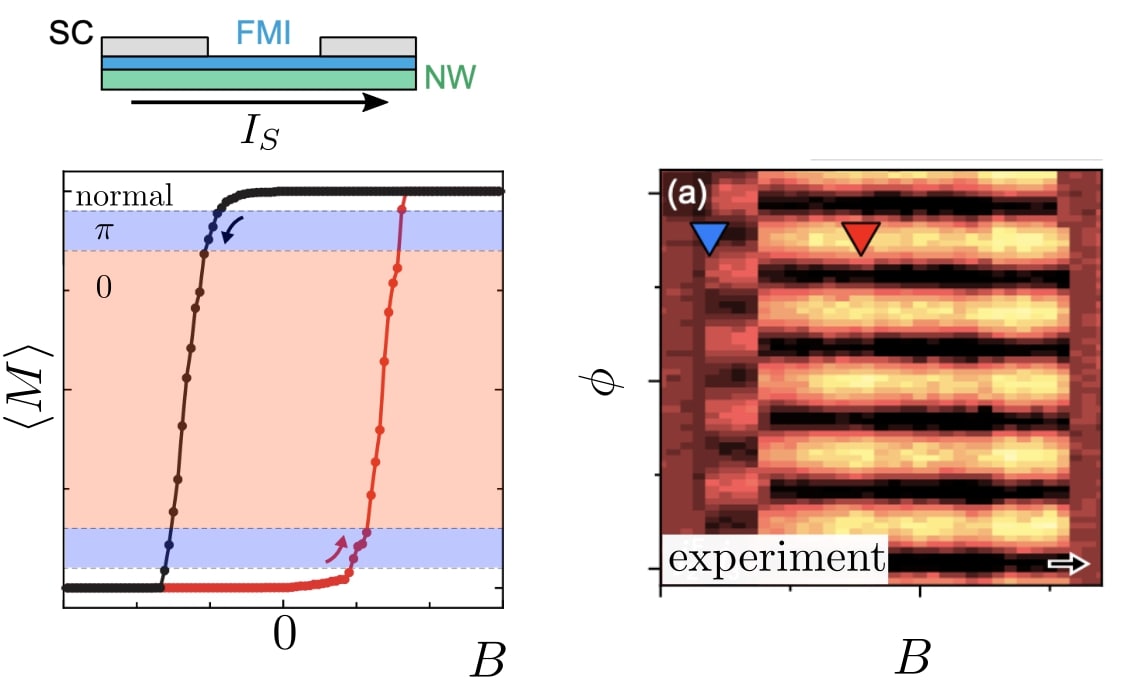
We report supercurrent transport measurements in hybrid Josephson junctions comprised of semi- conducting InAs nanowires with epitaxial ferromagnetic insulator EuS and superconducting Al coatings. Using a multi-interferometer setup, we measure the current-phase relation of multiple magnetic junctions and find an abrupt switch between π and 0 phases that we attribute to the discrete flip of Eus domains.[Full article]